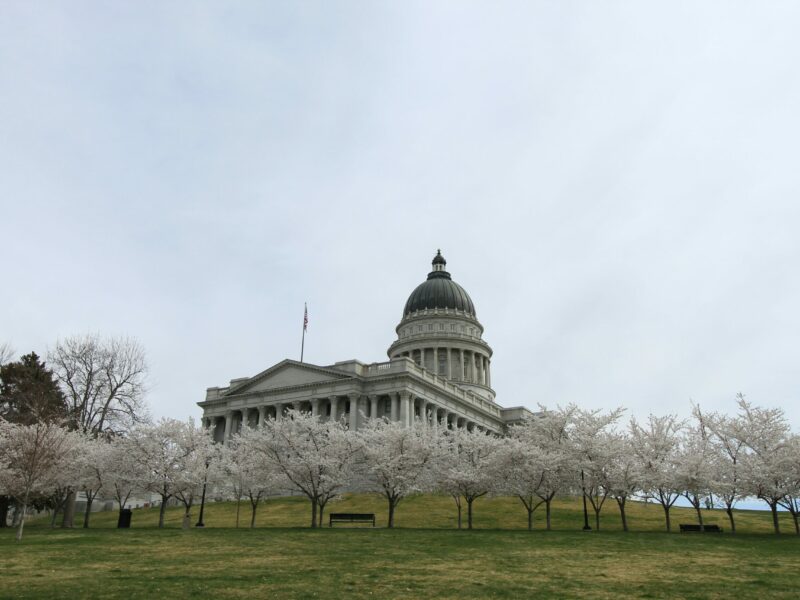
Salt Lake City, Sandy City, and Metropolitan Water District of Salt Lake and Sandy file joint suit aimed at environmental protections in Little Cottonwood Canyon
Salt Lake City—Salt Lake City, Sandy City, and the Metropolitan Water District of Salt Lake & Sandy (MWDSLS) filed a joint lawsuit in federal court on Monday, challenging the federal Record of Decision for the “S.R. 210: Wasatch Boulevard through Town of Alta Project” (dated June 29, 2023).
The Record of Decision followed a multi-year process undertaken by the Utah Department of Transportation (UDOT) to meet requirements outlined in the National Environmental Policy Act (NEPA). The joint lawsuit seeks to require a supplemental Environmental Impact Statement (EIS) and new federal Record of Decision (ROD) pursuant to NEPA that appropriately considers the impact of transportation projects, including a proposed gondola and other projects on water resources, the Wilderness Act of 1964, the Transportation Act of 1966, and the Administrative Procedures Act.
Salt Lake City, Sandy City, and MWDSLS are filing this lawsuit to protect their current and future obligations to deliver safe and reliable drinking water to more than one million people, businesses, and institutions throughout the Salt Lake Valley.
The legal action is not filed in opposition to transportation improvements to relieve canyon congestion. Rather, the concern is that the process by which the alternatives have been selected failed to adequately consider the impacts of this project on the surrounding natural resources.
“Clean, safe drinking water is not something we take for granted—and we will take every step necessary to ensure this resource is considered and protected for residents throughout the valley,” Salt Lake City Mayor Erin Mendenhall said. “Salt Lake City made consistent formal requests throughout the process to include such critical analysis, as is required of the NEPA process, Environmental Impact Statement and Record of Decision to evaluate water resource impacts, but each failed to adequately do so.”
Little Cottonwood Creek is a significant source of drinking water for the Salt Lake Valley’s inhabitants and visitors. The drinking water that originates in local canyons is of the highest quality, a direct result of deliberate watershed stewardship and investment taken by Salt Lake City and Sandy City for more than 120 years. The proposed Little Cottonwood Canyon transportation projects pose a significant risk to these protected watershed areas, ultimately impacting the quality and reliability of our communities’ most important water supply. The purpose of the lawsuit is to require that water and environmental impacts be identified and studied appropriately.
“In this situation, everyone who depends on the water resources from the Little Cottonwood watershed and the Central Wasatch Mountains benefits from a comprehensive process that appropriately considers the impact to water supply and quality,” said Salt Lake City Department of Public Utilities Director Laura Briefer. “The Final Environmental Impact Statement and federal Record of Decision do not adequately consider this project’s impacts to the water resources that our community relies upon.”
NEPA requires agencies to identify and take a hard look at the environmental impacts of proposed actions. The NEPA process in this case is insufficient. The plaintiffs contend that water resources were inadequately evaluated in the EIS and ROD, in addition to visual and noise effects on the Twin Peaks and Lone Peak Wilderness Area; the relationship of the project to Utah’s changing climate; and the indirect effects this project will have on neighboring resources, such as Big Cottonwood Canyon (another key component in the Valley’s high-quality drinking water supply).
While challenging the lack of environmental consideration, the group also asserts a very real and immediate impact on the current traffic in Sandy City and the increased congestion which will result from the project.
“The Environmental Impact Study for Little Cottonwood Canyon did not include SR 209 (Little Cottonwood Road and 9400 South) or Wasatch Boulevard south of SR209. These routes account for nearly half of the traffic leading into Little Cottonwood Canyon,” said Sandy Mayor Monica Zoltanski. “With the addition of a 2,500-stall parking structure at the mouth of the canyon, the influx of additional traffic would have a serious detrimental financial and public safety impact on the most environmentally sensitive area of Sandy City. In addition, we have a shared obligation to protect the Little Cottonwood Canyon watershed, which is the primary source of drinking water for Sandy residents.”
Salt Lake City and Sandy City, along with the MWDSLS, are legally obligated to protect drinking water supplies.
CONTACT:
Andrew Wittenberg, Salt Lake City Mayor’s Office
385-522-3800 – [email protected]
Chloe Morroni, Salt Lake City Department of Public Utilities
801-702-0801 – [email protected]
Susan Wood, Sandy City Public Affairs and Public Information Officer
801-568-7104/801-520-8886 – [email protected]




